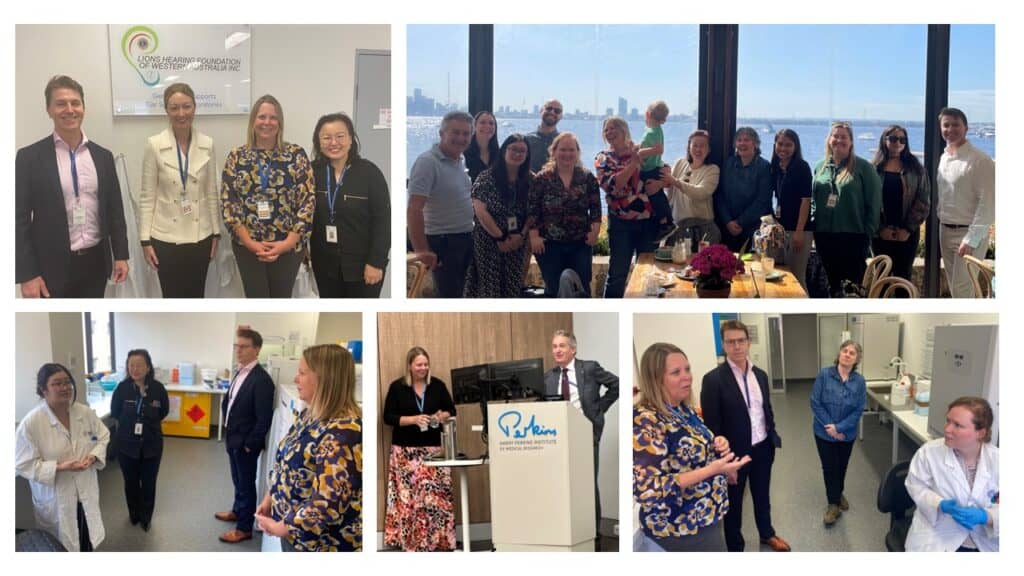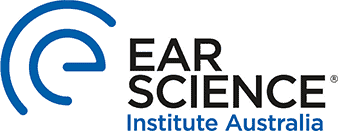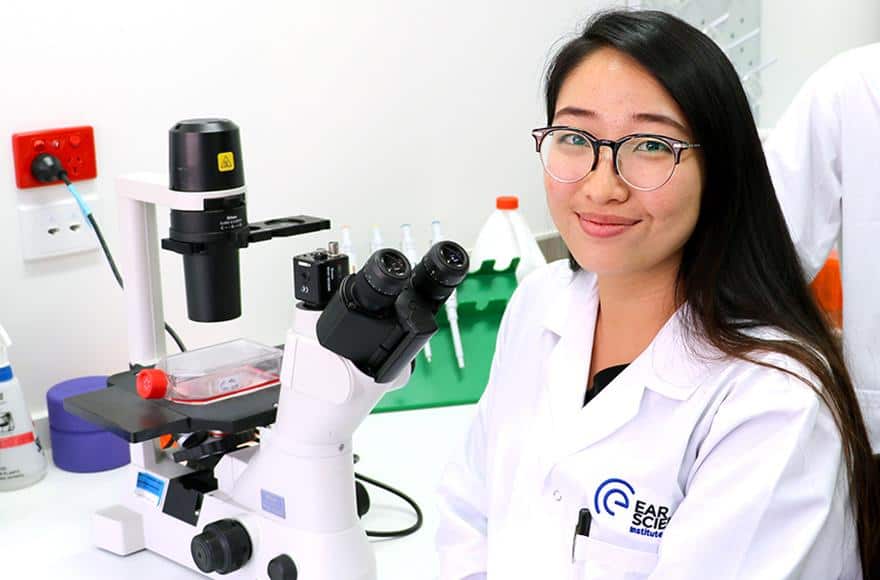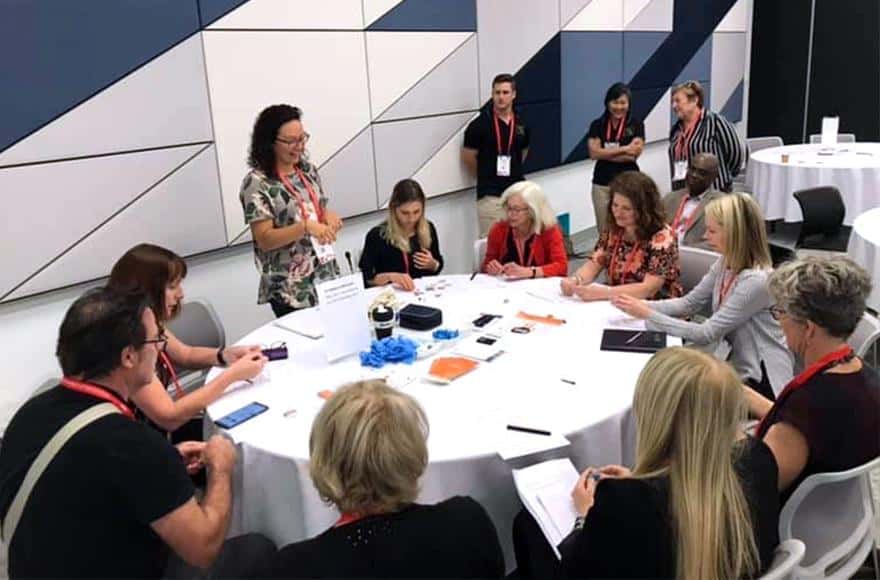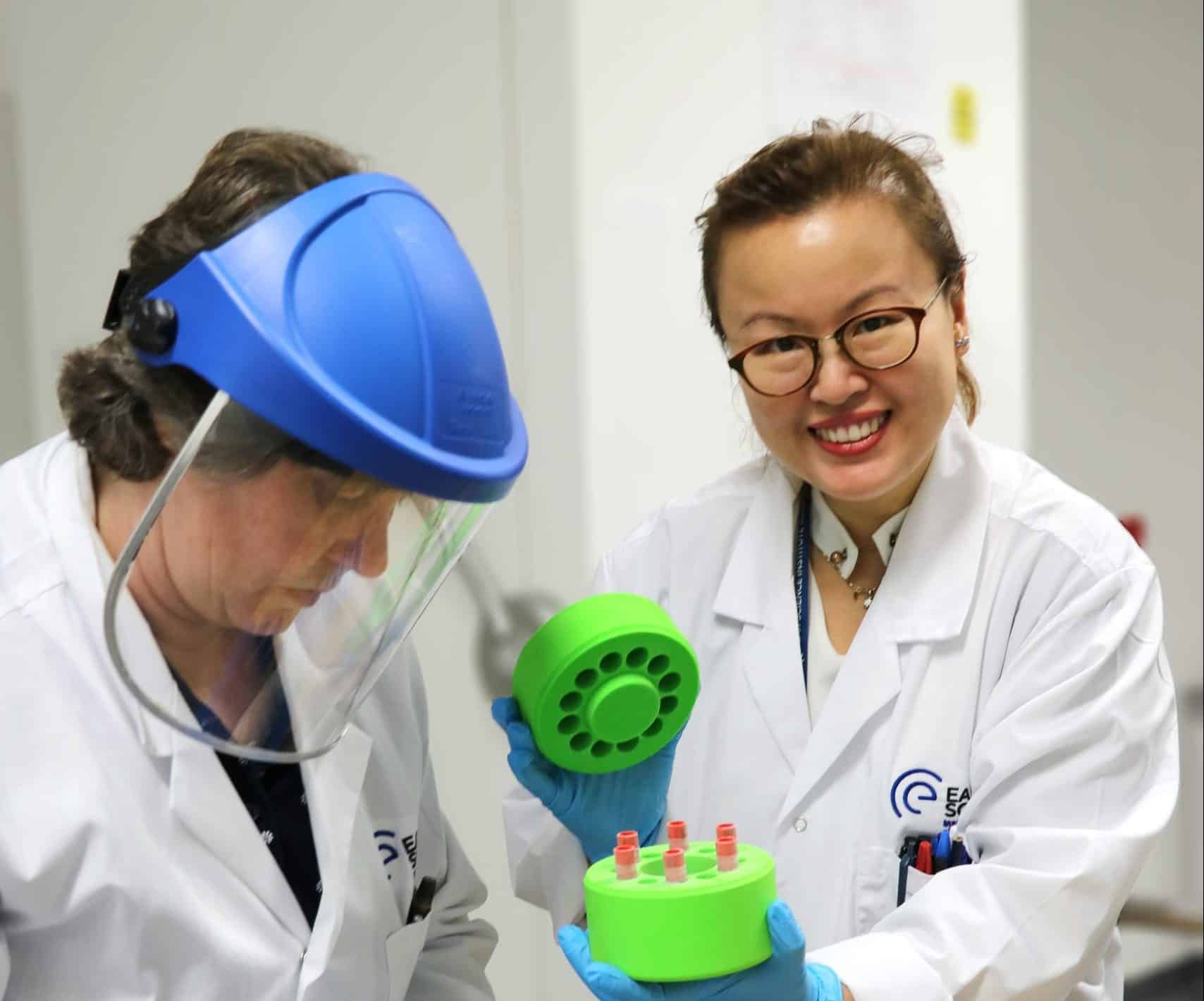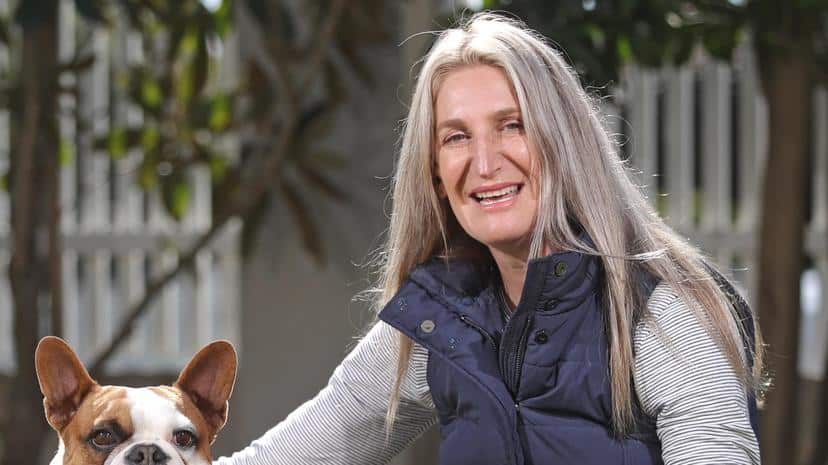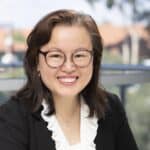Excitement was in the air at Ear Science in mid-September, with visiting scholar Professor Brandon Cox arriving from the US to take part in a series of activities and highlight her groundbreaking work in Regenerating hair cells in the auditory and vestibular systems.
We thank our donors through our annual Gift of Hearing Appeal that made Brandon’s trip possible.
Brandon commenced the week with a tour of the Ear Science laboratory in the Sarich building, facilitated by Laboratory Manager Sharon Redmond. Head of Hearing Therapeutics Elaine Wong provided an overview of her team’s work before Brandon visited the laboratory and met with Research Assistants Fiona Leith, Joey Lynch and Research Officer Derek Delaney who all provided detailed explanations of their specific areas of research.
On Tuesday, Brandon presented at the monthly Staff Symposium on the topic of Drug development for the treatment of hearing loss and tinnitus, sharing new data from her lab and collaborators. The symposium was very well attended, with 94 staff members tuning in.
On Thursday, at the Harry Perkins Institute, Professor Cox presented her groundbreaking research on Regenerating hair cells in the auditory and vestibular systems, with 55 attending, both in person, and ASOHNS members joining online from across the country. A recording of the presentation is available HERE.
The week finished with members of the research and leadership team hosting a breakfast, with the Perth Spring weather and Swan River providing a beautiful backdrop.
Hosting visiting scholars enhances intellectual and reputational aspects of the institute, providing valuable opportunities for knowledge exchange. Brandon can share with her network that genetics in hearing loss is on the world stage in Perth with the WA-headquartered Australasian Hearing Registry and Biobank (AHRB), which will advance genetic therapies for childhood and adult hearing loss.
Brandon is currently a Professor at Southern Illinois University School of Medicine in Springfield, Illinois where she has funding from the National Institute of Health and the US Department of Defence.
